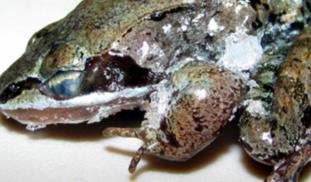Please wait...
About This Project
The North American wood frog Rana sylvatica can survive being frozen solid - no heartbeat, no brain activity. This animal survives the winter in a frozen state. In the Spring, the wood frog thaws out and spontaneously reanimates itself. The wood frog holds the key to organ cryopreservation, understanding how we can rapidly chill people in trauma cases while transporting them to hospital, as well as the key to long-term suspended animation.
More Lab Notes From This Project

Browse Other Projects on Experiment
Related Projects
Toward ethical and affordable antivenom solutions: Can anti-toxin be animal cruelty-free?
Snakebite envenoming causes over 100,000 deaths annually, yet current antivenoms depend on animal plasma...
Microplastics: Can engineered enzymes remove microplastics from the human body?
Polyethylene terephthalate (PET) microplastics have been detected in human blood and tissues, and linked...
Shutting down cancer’s recycling system with exosome-based therapy
Pancreatic cancer is one of the deadliest cancers because its cells survive by recycling their own components...





